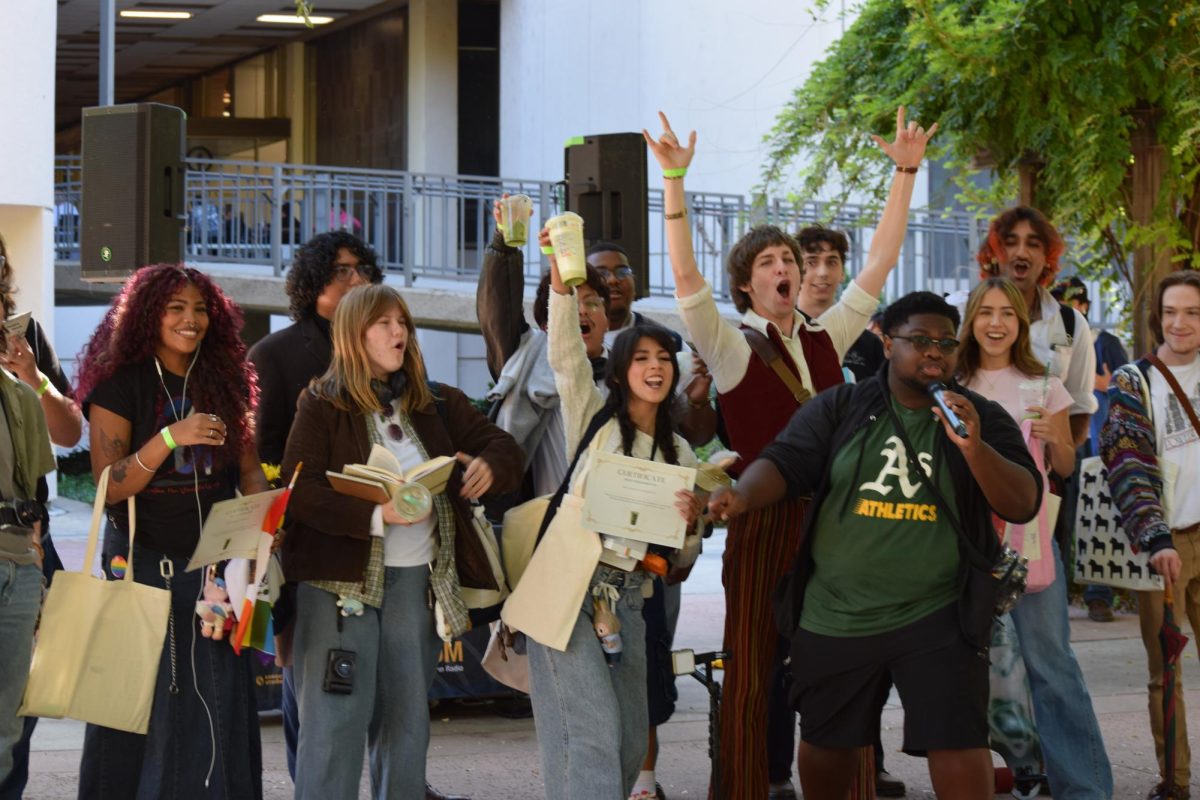An unconventional opera theater
April 13, 2010
Reviews from previous productions of Wolfgang Amadeus’ Mozart’s “The Magic Flute” made me think one way about the opera – I would see memorable costumes and hear incredible music, but the story itself would be generic and easily forgotten.
After watching the Sacramento State Opera Theatre’s production of “The Magic Flute,” directed by Michael Sokol and accompanied by Sac State’s Opera Theatre Orchestra, I noticed that my notions of the opera were very wrong. The cast reminded me with hard work and passionate acting any exhausted story can transform into something memorable.
The University Theater filled up Friday night for the three-hour long opera with song and dialogue, all in German. The cast was so confident it seemed they were all fluent in German.
Harry Sadler, music major who played Papageno in the opera, said this was not true. He said putting the show together entirely in German was the most difficult part of the production.
The stage was set up simply with a few trees, a standing door in the middle of the stage, and blue and yellow lights lighting up either side of the stage. Hanging above the stage was a rectangular screen that held subtitles for the audiences to read. Below the stage, the orchestra took its place, dressed in black and white playing their violins, violas, cellos, bass and celeste.
Modern alterations to the opera’s storyline were instantly evident because of the modernized costumes, which made the opera less formal and more comical.
The play started with a commonly dressed young prince, Tamino, played by Matt Hidalgo, appearing on the stage alongside the Queen of the Night, played by Whitney Roeder, who was dressed similar to Sarah Palin, with a brown fur coat, glasses and brown suit.
The Queen requested that Tamino go and save her daughter Pamina, played by Sarah Haugland. Pamina was held prisoner by Sarastro, played by Will Tvrdik.
The Queen’s three ladies, who serve as her messengers to Tamino, then gave him a magic flute, a magic bell and a portrait of Pamina to guide him throughout his journey and he instantly falls in love.
Tamino brings his new friend, Papageno to rescue the princess. Their comedic and emotionally compelling journey requires courage, endurance and tests the characters faith in love.
Sadler’s performance of Papageno, was the audience’s favorite of the night. Starting with his first appearance, when he surprised the audience entering through their seating, confused and whistling. This clumsy, naive character, who yearned for love like Tamino had, reminded the audience that even the innocent have vices to overcome.
The idea of a young prince running off to save a princess seemed like a common Disney movie, but with good musical accompaniment and very little special effects it went beyond the basics of Walt Disney.
Audience member and Sac State graduate Julie Anne Villalobos said because the production used less effects, the opera was able to create an unusual interpretation that made it more interesting.
“Usually the character of Papageno is a bird, he’s not dressed in yellow overalls and a plaid shirt, and other characters also don’t dress in suits and sunglasses and such as the priests did in the show, so that change made the opera a little more exciting,” Villalobos said.
At one point, instead of the usual mask that is in almost every other rendition of “The Magic Flute,” the Queen’s three ladies put a pacifier in Papageno’s mouth that was locked with a master lock for telling a fib.One the most comical scenes of the play included Papageno using his magic bell to distract Monastatos, played by Adam Boles, while he tries to escape with Pamina. Papageno shakes his bell and the men are hypnotized and began to do an infamous dance – the macarena.
Although comedy was a strong part of the opera, it was not all it had to offer.
The emotions of heart wrenching love and despair were portrayed throughout the opera. The actors brought these emotions to life, which made it possible for the audience to understand the travesties occurring on stage.
Even though they spoke in a foreign language, I was able to look at the stage without reading subtitles and still grasped what was going on in perfect clarity.
Audience members David and Cheryl Burns said they enjoyed the play immensely.
“Sarastro was an amazing singer and Papageno was hilarious, we loved it,” they said.
At the end of the production, I heard many people filing out of the theater laughing and replaying their favorite scenes – the lighthearted opera had a more lasting impression on the audience than a conventional opera would have had.
Miriam Arghandiwal can be reached at [email protected]




























































































































